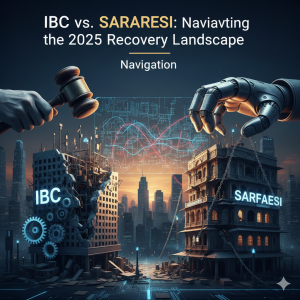Pro-Arbitration Legal Reforms
The Arbitration and Conciliation Act, 1996 has undergone major changes, making India more arbitration-friendly.
Reforms include:
- Time-bound completion: Award within 12-18 months (Section 29A)
- Reduced judicial intervention under Section 5
- Establishment of the Arbitration Council of India (ACI) to grade institutions and promote institutional arbitration
- Clarity on emergency arbitration, interim measures, and seat vs. venue distinctions
Recent Case Law Update (2024-25):
In XYZ Ltd. v. ABC Infra Pvt. Ltd., the Delhi High Court upheld an emergency arbitrator’s award passed under SIAC Rules—boosting confidence in interim relief by arbitral tribunals.
Judicial Support for Arbitration
Indian courts have increasingly adopted a pro-arbitration stance:
- Courts refer disputes to arbitration under Section 8/11 promptly
- They uphold valid arbitration clauses, even in complex commercial contracts
- There’s strict enforcement of foreign arbitral awards under the New York Convention
Example: In 2024, the Supreme Court reaffirmed that fraud is no longer a bar to arbitration unless it’s extremely serious or affects public interest (Avitel Post Studioz Ltd. v. HSBC PI Holdings reaffirmed).
Institutional Arbitration is Gaining Traction
2025 sees a rise in institutional arbitration over ad hoc arbitration.
Top arbitration centers in India:
- Mumbai Centre for International Arbitration (MCIA)
- Delhi International Arbitration Centre (DIAC)
- Nani Palkhivala Arbitration Centre (NPAC)
- India International Arbitration Centre (IIAC) – under Arbitration Council of India
These institutions provide:
- Panel of experts
- Transparent fee structures
- Administered timelines
- Enforceable awards
Cross-Border Confidence in Indian Arbitration
Thanks to:
- India’s status as a signatory to the New York Convention
- Consistent enforcement of foreign arbitral awards
- Improved international ranking in Ease of Doing Business (Dispute Resolution)
More foreign companies now accept Indian arbitration clauses and Indian arbitral seats.
Pro Tip: Mention a well-known institution (like MCIA or SIAC) and a neutral seat in your international contracts.
Preferred in Commercial Contracts
- Sectors where arbitration is now the default clause:
- Construction & Infrastructure
- Energy, Oil & Gas
- Joint Ventures
- Shareholder and M&A Disputes
- Technology & IP Licensing
- Real Estate
Today, almost 90% of commercial contracts involving medium to large enterprises in India contain arbitration clauses.
Key Advantages of Arbitration in 2025
Feature Arbitration Litigation
Timeframe 12–18 months 5–10 years+
Confidentiality Yes No
Choice of Experts Yes No
Cross-border Enforceability Strong (NY Convention) Complex
Flexibility High Low
Court Involvement Minimal Full
Things to Keep in Mind
- Draft clear arbitration clauses in contracts (seat, language, number of arbitrators, institution)
- Ensure enforceability by aligning with Model Arbitration Clauses
- Choose a qualified arbitrator or institution
- Understand rules of cost allocation and interim relief
Conclusion
In 2025, arbitration in India is no longer just an “alternative” to litigation—it’s the preferred choice for businesses, startups, multinationals, and even public sector undertakings. With legal certainty, strong judicial support, and a fast-growing institutional framework, India is positioning itself as a global hub for arbitration.
Whether you’re a founder negotiating an investor agreement, a contractor in a real estate dispute, or a foreign company doing business in India—arbitration should be part of your strategy.
Need help drafting airtight arbitration clauses or resolving disputes effectively? Our team at Narendra Madhu Associates ensures your rights are protected, from negotiation to enforcement.



